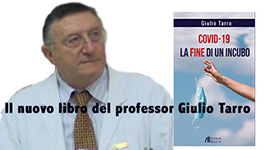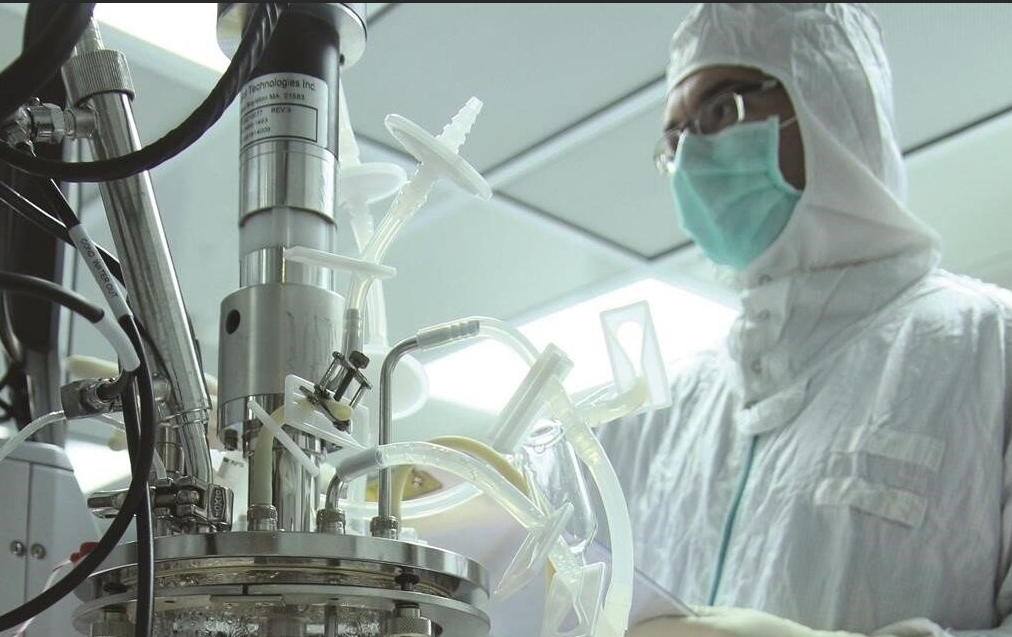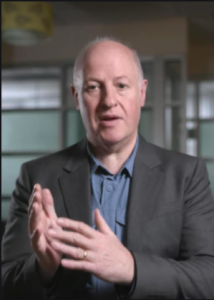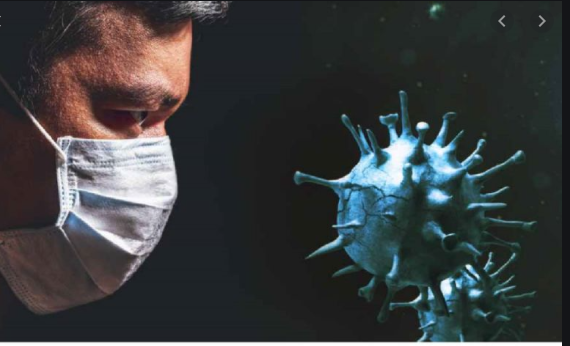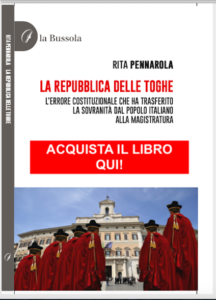E’ spuntato per via naturale o è stato prodotto in laboratorio, il famigerato virus del Covid 19?
Il dilemma si pone ormai da quasi un anno e mezzo, il pomo della discordia è il laboratorio di Wuhan. Ma non solo. Come la ‘Voce’ ha documentato in una lunga inchiesta di pochi giorni fa, inquietanti segnali arrivano dagli Stati Uniti, sotto i riflettori il super centro di Fort Detrick, dove sono stati condotti spericolati esperimenti fino a luglio 2019, mese in cui le stesse autorità americane hanno posto fine a quei test e chiuso il centro. Ma cosa era successo per provocare quella improvvisa chiusura? Non si è mai saputo, sulla vicenda è calato il silenzio più totale né i media hanno mai cercato di far luce su quel più che inquietante (per i destini dell’umanità) mistero.
Del resto gli americani sono presenti ovunque, sul palcoscenico delle nuove ‘biologic wars’. Non solo via Fort Detrick e i circa 200 centri e laboratori sparsi in mezzo mondo, tutti impegnati fino al collo in ricerche che più ‘border line’ non si può; ma anche proprio attraverso il laboratorio di Wuhan, le cui ricerche sono state generosamente finanziate dal ‘NIAD’, l’istituto in cui regna da sempre il super virologo a stelle e strisce Anthony Fauci.
Per l’occasione il NIAD si è servito della copertura di un’altra sigla scientifica, ECOHEALTH ALLIANCE, guidata da un ricercatore molto controverso: quel Peter Daszak che ha guidato, come rappresentante americano, la taroccata missione promossa dall’Organizzazione Mondiale della Sanità per visitare a gennaio 2020 i famigerati laboratori di Wuhan.
Of course, quella missione ha partorito il classico topolino. Evidente, infatti, che il capo-missione Daszak volesse far di tutto per nascondere al mondo quel che aveva finanziato per fantomatiche ricerche condotte, quindi, in perfetta partnership con i cinesi. La missione, quindi, ha fatto flop: tutto ok, niente di pericoloso.
Solo mesi dopo gli americani si sono ‘svegliati’, o meglio hanno fatto finta di svegliarsi. E accorgersi di quello che a Wuhan era successo. Da qui l’accelerazione per altre indagini sulle attività del laboratorio cinese, e la richiesta di una nuova missione, preferibilmente più seria, ma sempre sotto l’egida dell’OMS.
Il tutto, nel bel mezzo della sempre più chiassosa bagarre USA-Cina, pronte a lanciarsi reciprocamente pesanti accuse sul fronte delle ‘biologic wars’, usate sempre più come un’arma di ricatto.
E cosa hanno fatto i media internazionali per far luce sulla vera origine del coronavirus? Nato dove, il virus? Prodotto o no in laboratorio? ‘Naturale’ o ‘artificiale’?
Il caos più totale, media in piena crisi e facile preda – per molti mesi – dei tentativi di depistaggio orchestrati proprio dall’onnipresente Peter Daszak: il cui nome porta direttamente ad Anthony Fauci.
Di seguito potete leggere un lungo articolo appena pubblicato su questi bollenti temi dall’autorevole ‘British Medical Journal’ che ricostruisce per filo e per segno, mese per mese, la complessa story. Facendo nomi e cognomi, indicando tutte le testate statunitensi coinvolte nella campagna di disinformazione globale. Leggere per credere.
Vi proponiamo la versione originale, ossia in inglese, evitando di ricorrere al ‘traduttore automatico’ che ne combina di cotte e di crude.
The covid-19 lab leak hypothesis: did the media fall victim to a misinformation campaign?
For most of 2020, the notion that SARS-CoV-2 may have originated in a lab in Wuhan, China, was treated as a thoroughly debunked conspiracy theory. Only conservative news media sympathetic to President Donald Trump and a few lonely reports dared suggest otherwise. But that all changed in the early months of 2021, and today most outlets across the political spectrum agree: the “lab leak” scenario deserves serious investigation.
Understanding this dramatic U turn on arguably the most important question for preventing a future pandemic, and why it took nearly a year to happen, involves understanding contemporary science journalism.
A conspiracy to label critics as conspiracy theorists
Scientists and reporters contacted by The BMJ say that objective consideration of covid-19’s origins went awry early in the pandemic, as researchers who were funded to study viruses with pandemic potential launched a campaign labelling the lab leak hypothesis as a “conspiracy theory.”
A leader in this campaign has been Peter Daszak, president of EcoHealth Alliance, a non-profit organisation given millions of dollars in grants by the US federal government to research viruses for pandemic preparedness.1 Over the years EcoHealth Alliance has subcontracted out its federally supported research to various scientists and groups, including around $600 000 (£434 000; €504 000) to the Wuhan Institute of Virology.1
Shortly after the pandemic began, Daszak effectively silenced debate over the possibility of a lab leak with a February 2020 statement in the Lancet.2 “We stand together to strongly condemn conspiracy theories suggesting that covid-19 does not have a natural origin,” said the letter, which listed Daszak as one of 27 coauthors. Daszak did not respond to repeated requests for comment from The BMJ.
“It’s become a label you pin on something you don’t agree with,” says Nicholas Wade, a science writer who has worked at Nature, Science, and the New York Times. “It’s ridiculous, because the lab escape scenario invokes an accident, which is the opposite of a conspiracy.”
But the effort to brand serious consideration of a lab leak a “conspiracy theory” only ramped up. Filippa Lentzos, codirector of the Centre for Science and Security Studies at King’s College, London, told the Wall Street Journal, “Some of the scientists in this area very quickly closed ranks.”3 She added, “There were people that did not talk about this, because they feared for their careers. They feared for their grants.”
Daszak had support. After he wrote an essay for the Guardian in June 2020 attacking the former head of MI6 for saying that the pandemic could have “started as an accident,” Jeremy Farrar, director of the Wellcome Trust and co-signer of the Lancet letter, promoted Daszak’s essay on Twitter, saying that Daszak was “always worth reading.”4
Daszak’s behind-the-scenes role in orchestrating the statement in the Lancet came to light in November 2020 in emails obtained through freedom of information requests by the watchdog group US Right To Know.
“Please note that this statement will not have EcoHealth Alliance logo on it and will not be identifiable as coming from any one organization or person,” wrote Daszak in a February email, while sending around a draft of the statement for signatories.5 In another email, Daszak considered removing his name from the statement “so it has some distance from us and therefore doesn’t work in a counterproductive way.”6
Several of the 27 scientists who signed the letter Daszak circulated did so using other professional affiliations and omitted reporting their ties to EcoHealth Alliance.3
For Richard Ebright, professor of molecular biology at Rutgers University in New Jersey and a biosafety expert, scientific journals were complicit in helping to shout down any mention of a lab leak. “That means Nature, Science, and the Lancet,” he says. In recent months he and dozens of academics have signed several open letters rejecting conspiracy theory accusations and calling for an open investigation of the pandemic’s origins.789
“It’s very clear at this time that the term ‘conspiracy theory’ is a useful term for defaming an idea you disagree with,” says Ebright, referring to scientists and journalists who have wielded the term. “They have been successful until recently in selling that narrative to many in the media.”
The Lancet’s editor in chief, Richard Horton, did not respond to repeated requests for comment but, after The BMJhad sent him questions, the Lancet expanded Daszak’s conflicts of interest on the February statement and recused him from working on its task force looking into the pandemic’s origin.1011
The Lancet letter ultimately helped to guide almost a year of reporting, as journalists helped to amplify Daszak’s message and to silence scientific and public debate. “We’re in the midst of the social media misinformation age, and these rumours and conspiracy theories have real consequences,” Daszak told Science.12 Months later in Nature, he again criticised “conspiracies” that the virus could have come from the Wuhan Institute of Virology and complained about “politically motivated organisations” requesting his emails.13
That summer Scientific American, one of the oldest and best known popular science magazines in America, published a complimentary profile of Daszak’s colleague, Shi Zhengli, a centre director at the Wuhan Institute of Virology, which has been funded by EcoHealth Alliance.14
EcoHealth Alliance and the Wuhan Institute of Virology earned additional sympathetic reporting after the US National Institutes of Health (NIH) cancelled its grant to EcoHealth Alliance in April last year—allegedly on President Trump’s order—because of its ties to Wuhan, a decision protested by 77 Nobel laureates and 31 scientific societies.15 (The NIH has subsequently awarded EcoHealth Alliance new funding.)
Efforts to characterise the lab leak scenario as unworthy of serious consideration were far reaching, sometimes affecting reporting that had first appeared well before the covid-19 pandemic. For example, in March 2020 Nature Medicine added an editor’s note (“Scientists believe that an animal is the most likely source of the coronavirus”) to a 2015 paper on the creation of a hybrid version of a SARS virus, co-written by Shi.16
Wade explains, “Science journalists differ a lot from other journalists in that they are far less sceptical of their sources and they see their main role as simply to explain science to the public.” This, he says, is why they began marching in unison behind Daszak.
The U turn
By the end of 2020, just a handful of journalists had dared to seriously discuss the possibility of a lab leak. In September, Boston magazine reported on a preprint that found the virus unlikely to have come from the Wuhan seafood market, as Daszak has argued, and that it seemed too well adapted to humans to have arisen naturally. However, the story failed to garner much attention, similarly to a little noticed investigative report by the Associated Press in December that exposed how the Chinese government was clamping down on research into covid-19’s origins.
In January this year, New York magazine ran a sprawling story detailing how the pandemic could have started with a leak from the lab in Wuhan. The hypothetical scenario: “SARS-CoV-2, the virus that causes covid-19, began its existence inside a bat, then it learned how to infect people in a claustrophobic mine shaft, and then it was made more infectious in one or more laboratories, perhaps as part of a scientist’s well-intentioned but risky effort to create a broad-spectrum vaccine.” Scientists and their media allies swiftly criticised the article.
But mainstream outlets from the New York Times to the Washington Post are now treating the lab leak hypothesis as a worthy question, one to be answered with a serious investigation. In a recent interview with the New York Times, Shi denied that her lab was ever involved in “gain of function” experiments (box 1) that enhance a virus’s virulence. But the newspaper reported that her lab had been involved in experiments that altered the transmissibility of viruses, alongside interviews with scientists who said that far more transparency was necessary to determine the truth of SARS-CoV-2’s origins.17
What is “gain of function” research?
After two teams genetically tweaked the H5N1 avian flu virus in 2011 to make it more transmissible in mammals, biosafety experts voiced concerns about “gain of function” research—experimental research that involves altering microbes in ways that change their transmissibility, pathogenicity, or host range.
In the Bulletin of the Atomic Scientists in 2012, Lynn Klotz predicted an 80% chance that a leak of a potential pandemic pathogen would occur sometime in the next 12 years. Two years later a Harvard epidemiologist, Marc Lipsitch, founded the Cambridge Working Group to lobby against such experiments.
At that time, three safety lapses involving dangerous pathogens led to a safety crackdown at the US Centers for Disease Control and Prevention. Lipsitch later argued in 2018 that the release of such a pathogen would “lead to global spread of a virulent virus, a biosafety incident on a scale never before seen.”
Gain of function research was briefly paused because of these concerns, although critics debate as to when it restarted. For more than a decade, scientists at the Wuhan Institute of Virology have been discovering coronaviruses in bats in southern China and bringing them back to their lab for gain of function research, to learn how to deal with such a deadly virus should it arise in nature.
The closest known relative of the SARS-CoV-2 virus was found in a region of China almost 1000 miles from the Wuhan Institute of Virology—yet the pandemic apparently started in Wuhan. Biosafety experts have noted that lab leaks are common but rarely reported, as hundreds of lab accidents had happened in the US alone.27
Two major events are probably responsible for the media’s change in tune. First, Trump was no longer president. Because Trump had said that the virus could have come from a Wuhan lab, Daszak and others used him as a convenient foil to attack their critics. But the framing of the lab leak hypothesis as a partisan issue was harder to sustain after Trump left the White House.
Second, after months of negotiation the Chinese government finally allowed the World Health Organization to come to Wuhan and investigate the pandemic’s origin. But in January 2021 WHO, which included Daszak on the team, returned with no evidence that the virus had arisen through natural spill-over.18 More worryingly, members were allowed only a few hours of supervised access to the Wuhan Institute of Virology.
The White House then released a statement making clear that it did not trust China’s propaganda denying that the virus could have come from one of the country’s labs. “We have deep concerns about the way in which the early findings of the covid-19 investigation were communicated and questions about the process used to reach them,” said the statement. “It is imperative that this report be independent, with expert findings free from intervention or alteration by the Chinese government.”
The following month the Washington Post editorial board called for an open and transparent investigation of the virus’s origins, highlighting Shi’s experiments with bat coronaviruses that were genetically very similar to the one that caused the pandemic.19 It asked, “Could a worker have gotten infected or inadvertent leakage have touched off the outbreak in Wuhan?” The Wall Street Journal, citing a US intelligence document, recently reported that three Wuhan Institute of Virology researchers were admitted to hospital in November 2019.20
To follow any US financial ties and to better understand how the pandemic started, Republicans have launched investigations of government agencies that fund coronavirus research, and one investigative committee has sent a letter to Daszak at EcoHealth Alliance demanding that he turn over documents. Meanwhile, Senate Republicans and Democrats have started to discuss an independent investigation of the virus’s origins.
A hard truth to swallow
The growing tendency to treat the lab leak scenario as worthy of serious investigation has put some reporters on the defensive. After Robert Redfield, former director of the Centers for Disease Control and Prevention, appeared on CNN in March, Scientific American’s editor in chief, Laura Helmuth, tweeted, “On CNN, former CDC director Robert Redfield shared the conspiracy theory that the virus came from the Wuhan lab.” The following day, Scientific American ran an essay calling the lab leak theory “evidence free.” And a week later a Nature reporter, Amy Maxmen, labelled the idea that the virus could have leaked from a lab as “conjecture.”
Helmuth did not respond to questions from The BMJ.
Some media outlets have attempted to justify their past reporting about the lab leak hypothesis as simply a matter of tracking a “scientific consensus” which, they say, has now changed. Vox posted an erratum noting, “Since this piece was originally published in March 2020, scientific consensus has shifted.”
The “scientific consensus” argument does not sit well with David Relman, a microbiologist at Stanford University, California. “We can’t even begin to talk about a consensus other than a consensus that we don’t know [the origins of SARS-CoV-2],” he recently told the Washington Post.21
A year lost
While the narrative took months to change in the media, several high profile intelligence sources had treated the lab leak theory seriously from early on. In April 2020, Avril Haines joined two other former deputy directors of the Central Intelligence Agency to write an essay in Foreign Policy asking, “To what extent did the Chinese government misrepresent the scope and scale of the epidemic?”22 A week later, one of the former intelligence officials who wrote that essay gave similar quotes to Politico.
Ignoring these early warnings led to a year of biased, failed reporting, says Wade. “They didn’t question what their sources were saying,” he says of the reporters who helped to sell the conspiracy theory narrative to the public. “That is the simple explanation for this phenomenon.”
An impartial, credible investigation?
As the news media scramble to correct and reflect on what went wrong with nearly a year of reporting, the episode has also highlighted quality control issues at the ubiquitous “fact checking” services.
Prominent outlets such as PolitiFact23 and FactCheck.org24 have added editor’s notes to pieces that previously “debunked” the idea that the virus was created in a lab or could have been bioengineered—softening their position to one of an open question that is “in dispute.” For almost a year Facebook sought to control misinformation by banning stories suggesting that the coronavirus was man made. After renewed interest in the virus’s origin, Facebook lifted the ban.25
Whether a credible investigation will be made into the lab leak scenario remains to be seen. WHO and the Lancet both launched investigations last year (box 2), but Daszak was involved in both, and neither has made significant progress.
In recent weeks, several high profile scientists who once denigrated the idea that the virus could have come from a lab have made small steps into demanding an open investigation of the pandemic’s origin.
The NIH’s director, Francis Collins, said in a recent interview, “The Chinese government should be on notice that we have to have answers to questions that have not been answered about those people who got sick in November who worked in the lab and about those lab notebooks that have not been examined.” He added, “If they really want to be exonerated from this claim of culpability, then they have got to be transparent.”26
But the nature of this investigation has still not been decided.
Scopri di più da La voce Delle Voci
Abbonati per ricevere gli ultimi articoli inviati alla tua e-mail.







